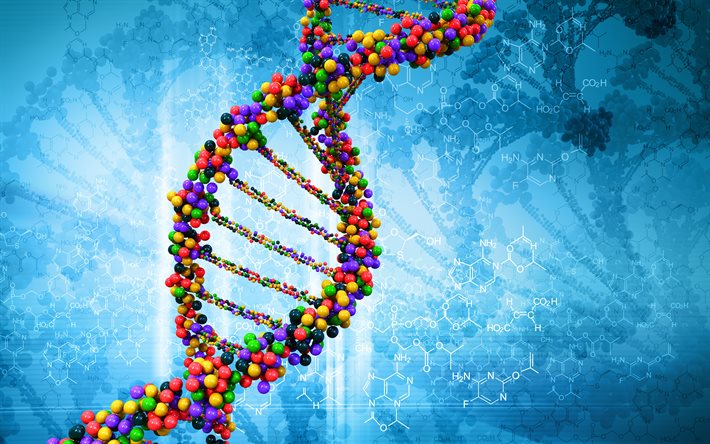Nucleic acids are the building blocks of life. They play an important role in the functioning of all known forms of life including plants, animals, bacteria and viruses. They are biopolymers, which means they are composed of smaller molecules known as monomers. These monomers are called nucleotides and are made up of three components: a 5-carbon sugar, a phosphate group, and a nitrogenous base.

There are two types of nucleic acids known as DNA and RNA. DNA stands for deoxyribonucleic acid and RNA stands for ribonucleic acid. The difference between these two is in the type of sugar that is present in their structure. DNA contains a sugar called deoxyribose while RNA contains a sugar called ribose.
DNA is the genetic material that stores all the information for the development, growth, and reproduction of living organisms. It is responsible for the transmission of genetic traits from one generation to the next. DNA is a long, double-stranded molecule that is tightly coiled to form chromosomes. These chromosomes are located in the nucleus of the cell and contain all the instructions for an organism to function properly.
RNA, on the other hand, plays a different role in cells. It is involved in the transcription and translation of genetic information into protein synthesis. RNA molecules carry genetic information from DNA to ribosomes, where proteins are synthesized. There are three types of RNA molecules: messenger RNA (mRNA), transfer RNA (tRNA), and ribosomal RNA (rRNA).
The structure of nucleotides is crucial for the function of nucleic acids. The 5-carbon sugar in nucleotides can be either ribose or deoxyribose. The phosphate group is attached to the 5' carbon of the sugar while the nitrogenous base is attached to the 1' carbon. There are four types of nitrogenous bases in DNA: adenine (A), guanine (G), cytosine (C), and thymine (T). In RNA, uracil (U) replaces the thymine (T) present in DNA.
The sequence of nucleotides in DNA determines the genetic information that is stored in an organism's chromosomes. The sequence of nucleotides also affects the way DNA interacts with other molecules inside a cell. Mutations in DNA can result in genetic disorders and diseases.
In summary, nucleic acids are essential biomolecules responsible for the storage and transmission of genetic information. DNA and RNA are two types of nucleic acids, with DNA being responsible for the storage of genetic information and RNA for the transfer of genetic information for protein synthesis. The structure of nucleotides is important for the function of nucleic acids, with the type of sugar and nitrogenous base affecting how the molecule interacts with other molecules in a cell.